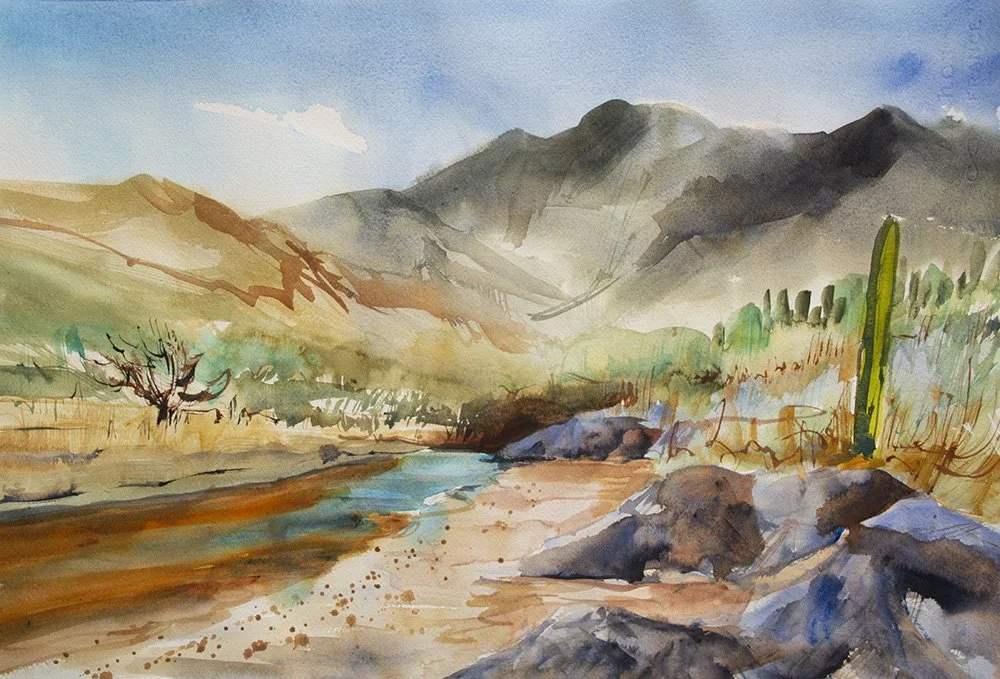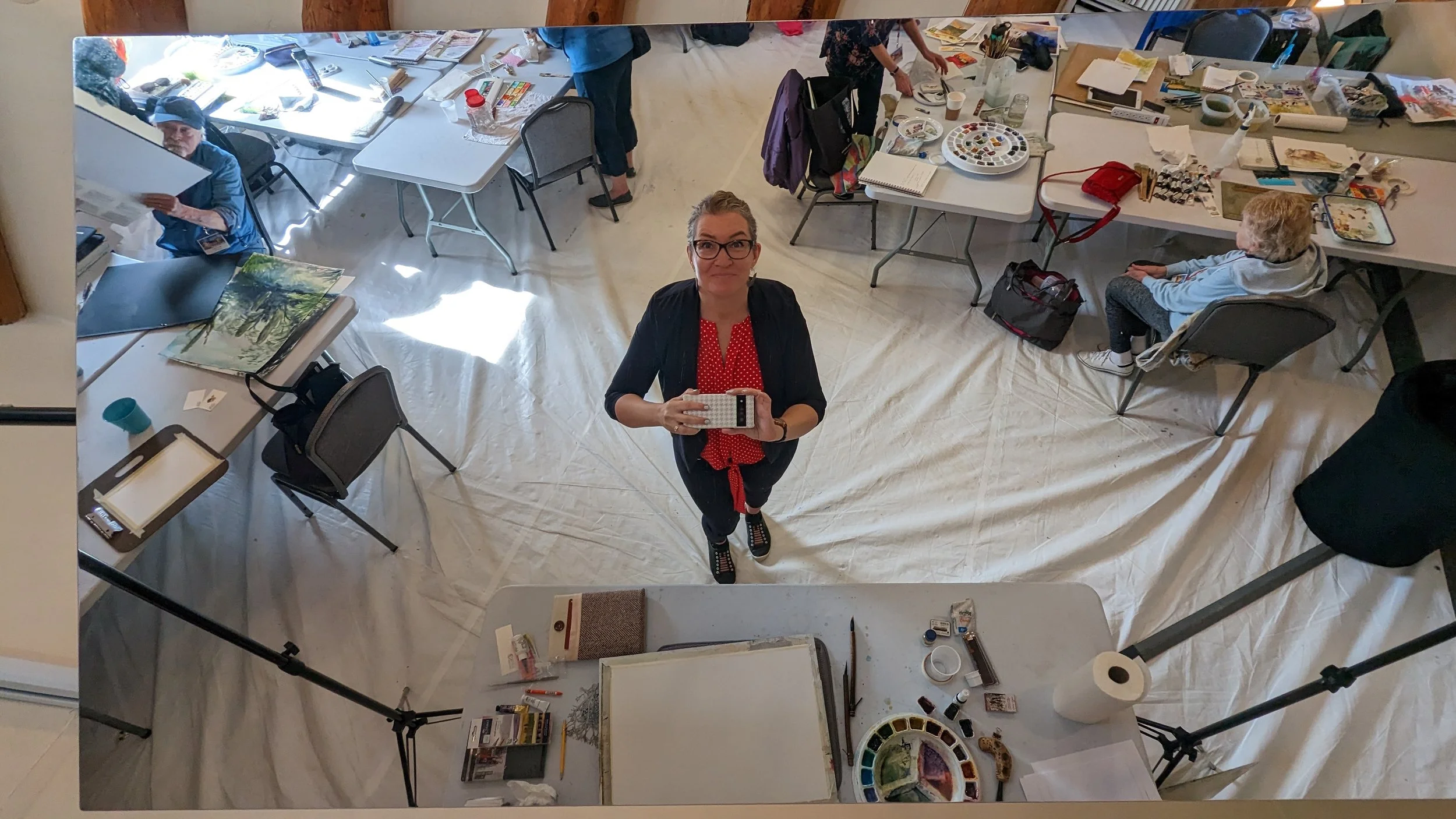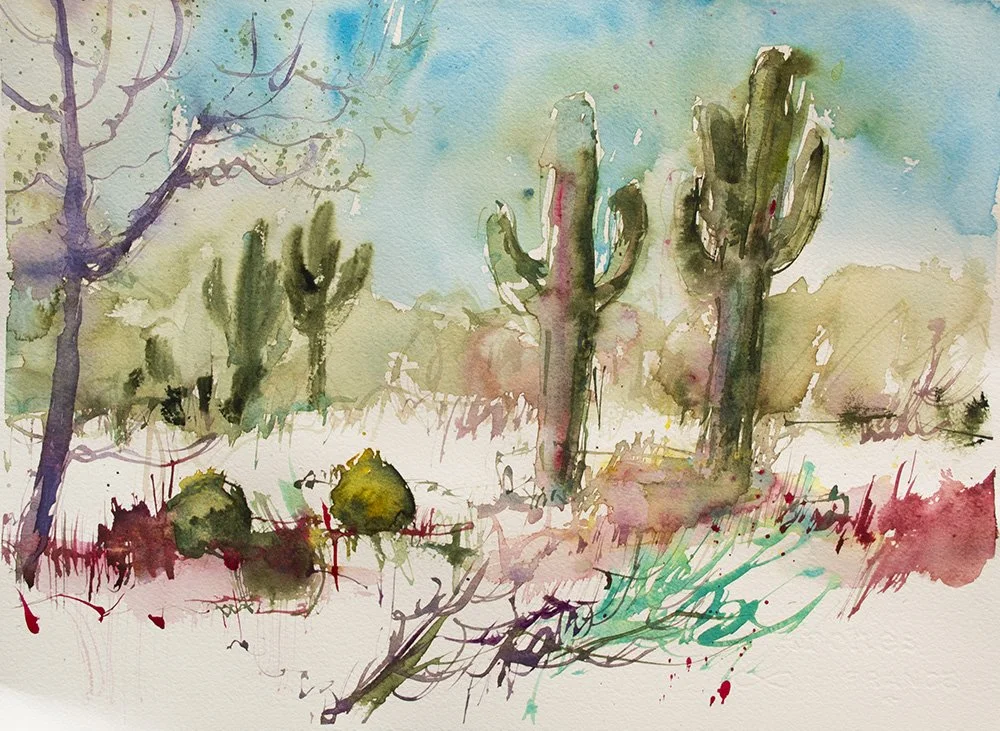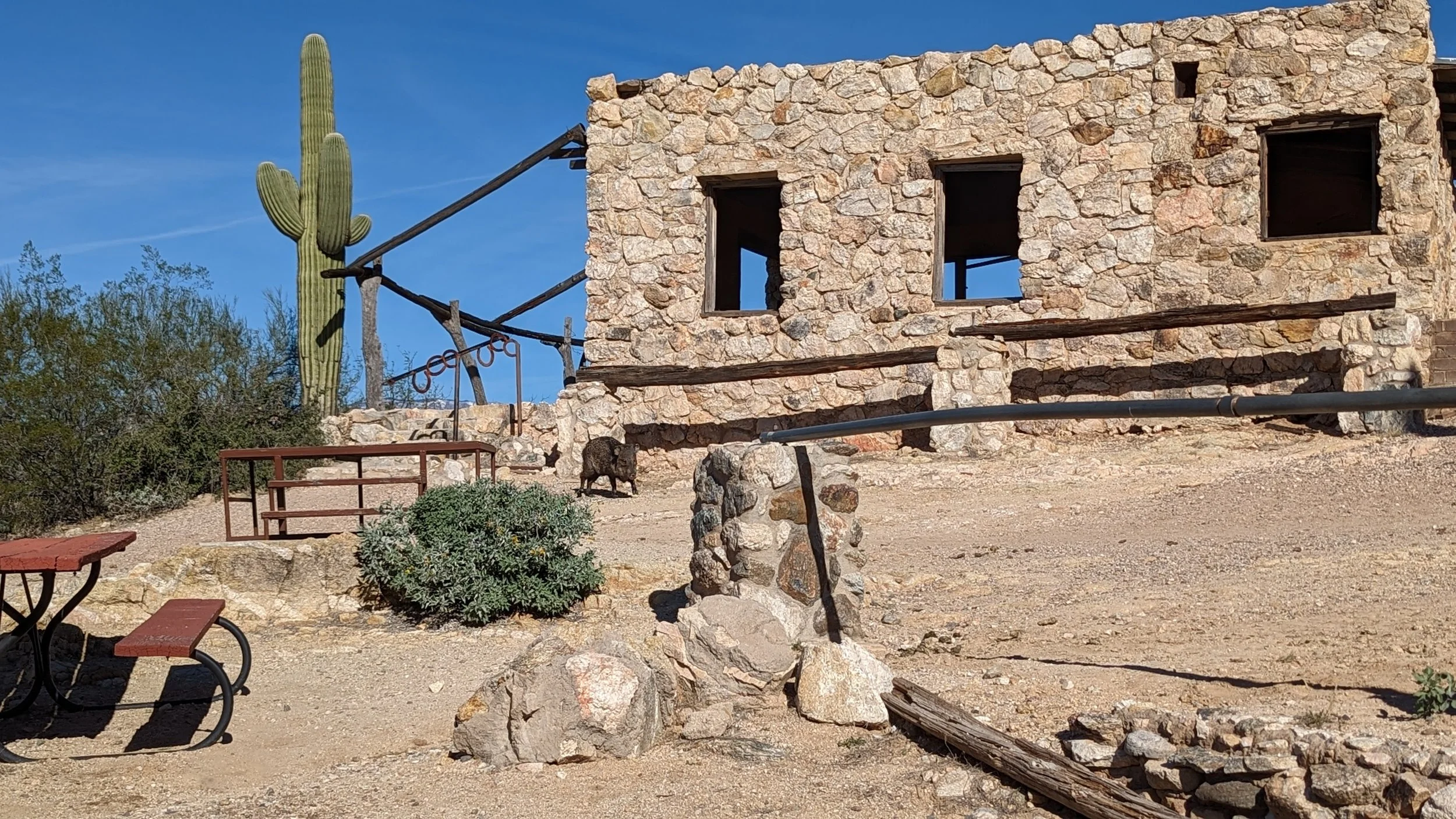Process & Permission: Principles from my In-Person Workshop in Tucson
Last week I left the snowy slopes of northern British Columbia for Tucson, Arizona, eager to paint the desert views from the Tanque Verde Ranch, hosted by Madeline Island School of the Arts. Even though I come as instructor, I learn so much through these experiences; the dedicated painting time, the new views to explore and the vulnerability of learning as I go while my students watch my process unfold.
Painting the Desert
Tanque Verde welcomed us well, with a large, well-lit studio space, central to the ranch, three delicious buffet meals a day, and beautiful views on all sides. One of my favourite places to paint was the wash, which was flowing with water due to the rain they’d had the week before, so the desert was a much greener place than I have experienced in the past. To have the combination of mountains, cacti and flowing water was just a wonderful fuel for painting inspiration!
Getting Started: Day 1
Day one was focused on getting familiar with our space, each other and our subject. When painting a landscape, I believe that the “first version shows you what you don’t know,” revealing gaps in your knowledge of the subject, potential problem areas or weak spots in your design or technique. It is from this first painting that I start to develop a strategy for next steps to make the next version stronger. It was no different this week. My first chosen subject was a scene I photographed on the drive from Phoenix to Tucson, a little rusty shack framed by desert shrubs and mountains, and the first version felt busy and unfocused.
I followed that first version by demonstrating ways to simplify the subject, and the sketches that developed from those exercises made for a much stronger painting when I tried that subject again. That was day two.
Developing a Language for the Environment
We wrapped up our second day planning ahead for plein air painting on day three. This desert landscape is unfamiliar to me, and as an artist, I need to develop a stylistic language for interpreting this new subject. I need to choose colours that feel right to me, shapes that depict the subject while also simplifying it, and this requires experimentation. The more free I feel to experiment, the more exciting my visual language for this new setting becomes! This sketch of saguaro came alive with the addition of Opera Pink and everyone in the room could see the difference this unexpected colour made, not just for the painting, but for the spirit in the room and my own creative freedom to put more of myself into my work.
Plein Air in the Desert
On day three, we took our painting kits to the wash, a streambed that, due to the rain, was flowing with fresh water. The framing of the rocks along the stream and the mountains behind brought a familiarity to the scene as I love painting the Rocky Mountains here in the north, and so I had subjects I knew, in a context that I was learning to paint and love. This felt like an adventure! I demonstrated a painting on location, and then did another half a painting while we were at the creek. In the afternoon, I used the “visual notes” taken through plein air painting on site to develop another studio version, without the weather’s challenges to contend with (things dry really quickly in the desert!). I liked each evolving version for different reasons, and with three versions to compare to, it was a wonderful opportunity to talk about how to critique one’s own work, what makes a critique beneficial, and how not to judge your work as well.
Critiques & Self evaluation
With three days of painting under our belts, it was a good time to take stock of what we’d all been painting, and some students chose to bring work forward for a critique or guidance. My priority is always to offer growth oriented guidance; to point out what is working well, to offer suggestions and options for strengthening the work in a way that aligns with the artist’s own goals for their art.
Javelinas and Sunshine!
On day four we started the day with a delicious cowboy breakfast up at the original homestead, a stone ruin a little higher up the mountain, and we lingered after breakfast the paint the view. What a treat to sit in the sunshine, listen to the birdsong, and paint the view! All painting was abandoned when a little herd of javelina joined us, scrounging for breakfast crumbs and taking very little notice of our presence. The desert is truly full of life!
Embracing Creative Freedom
Friday, our final day painting together, was freedom day - the goal of painting with even more unapologetic experimentation and playfulness became foremost, and I started by demonstrating a warm up of stamping with paint, rather than controlling it with the paintbrush. A number of students had asked to explore abstract painting and I challenged myself and them to take our desert landscapes into the realm of abstraction with courage and freedom. I have learned that it is easier for me to make brave choices when I surround myself with examples of other brave artists, and when I lead a workshop, I get to set that example of courage and playful fearlessness. It’s exciting!
I left Tucson with 20 large (15 x 22 inch) paintings, and six small (11 x 15 inch) ones. Every piece of paper I had brought had been used. I think that’s a good sign of a productive workshop! I’m going to order a few extra sheets when I teach at Madeline Island School of the Arts in July 2023.
Different Workshops Meet Different Needs
Because I teach both in person and online, I’ve started to realize that both kinds of painting education have their benefits. My online courses offer the time to work through the lessons slowly, and apply principles and techniques without comparing yourself to other artists in the room. But an in person workshop gives the opportunity for immediate response to your questions, instructor critique and guidance, and a span of dedicated painting time where you see progress unfold over days rather than weeks or months. You have the opportunity to paint without the distractions of everyday life.
When an in-person workshop involves travel, like my workshop in Cornwall, England in September 2023, the workshop is focused on enriching the experience of travel through painting - painting a scene pushes me to be present in my surroundings, rather than simply snapping photos and moving on to the next spot, and when a workshop keeps me in one place, like this most recent one at Tanque Verde or my upcoming workshop on Madeline Island in July, it’s more like an artist’s retreat, an intense learning time dedicated to personal artistic growth. Each type of learning has its place in the artist’s journey, and bring new inspiration, encouragement and a wealth of knowledge and experience to the student and instructor alike!
Has an in-person workshop made a difference for your art journey? I’d leave to hear about it in the comments below!










